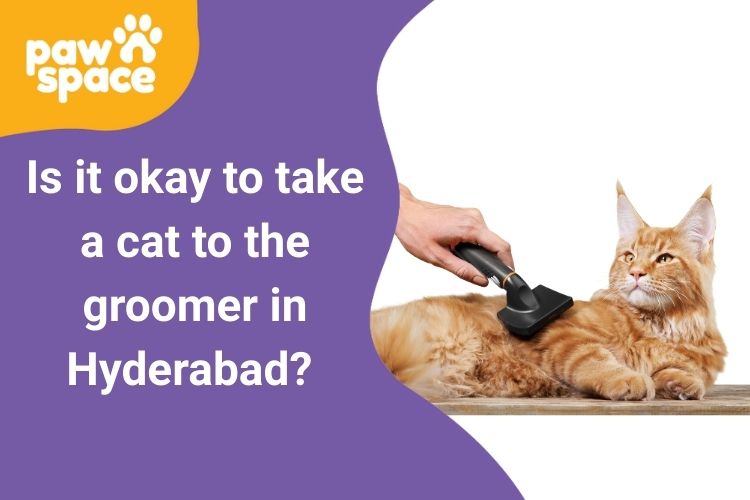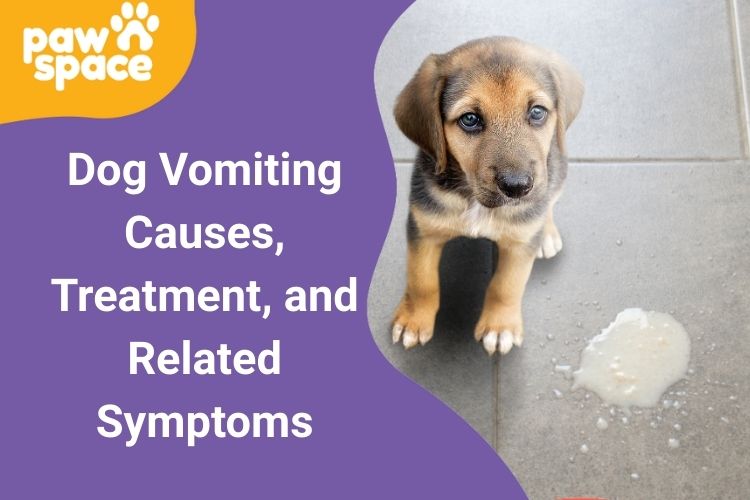Table of Contents
Toggle- The Subtle Art of Spotting The Culprits: Hot Spots in Your Furry Friend
- What Are Hot Spots and Why Do They Happen?
- Step-by-Step Guide to Treating Hot Spots at Home
- 1. Identify the Hot Spot
- 2. Trim the Fur Around the Area
- 3. Clean the Hot Spot Thoroughly
- 4. Treat with Soothers
- 5. Prevent Licking and Scratching
- 6. Keep an Eye on Your Dog’s Improvement
- Home Remedies for Hot Spots
- 1. Apple Cider Vinegar
- 2. Oatmeal Paste
- 3. Black Tea Bags
- 4. Preventing Hot Spots
- 5. Regular Grooming
- 6. Flea and Tick Control
- 7. Balanced Diet
- 8. Hydration
- 9. Stress Management
- When to Seek Veterinary Care
- Pawspace: The safe space for your pets
- Why Choose Pawspace?
- It is important to be your dog’s very own health detective
- FAQs
- 1. Why do hot spots develop in dogs?
- 2. Can hot spots be treated at home?
- 3. What do I use to clean a hot spot?
- 4. How do I prevent my dog from licking the hot spot?
- 5. When do I need to see a vet for hot spots?
The Subtle Art of Spotting The Culprits: Hot Spots in Your Furry Friend
Hot spots on dogs, also known as acute moist dermatitis, can be a painful and frustrating issue. These red, inflamed patches of skin appear suddenly and spread rapidly, causing significant discomfort for your pet. While veterinarians can treat severe cases, mild hot spots are often manageable at home with proper care and attention. As a pet parent, understanding the causes of hot spots and knowing how to treat them not only helps relieve your dog’s pain but also prevents future outbreaks.
This blog provides a comprehensive guide to healing hot spots at home, safely and preventively.
What Are Hot Spots and Why Do They Happen?
Hot spots are small, localised areas of skin irritation that ooze or become infected due to over-licking, scratching, or chewing. Irritated patches like these are often caused by hidden problems, including:
Skin Allergies:
Flea bites, food allergies, or environmental allergens trigger inflammation.
Poor Grooming:
Matted-coated dogs are more susceptible to hot spots since water trapped beneath the mats provides an ideal environment for bacteria to grow.
Insect Bites:
Flea, tick, or mosquito bites may create itching that results in hot spots.
Stress or Anxiety:
Compulsive licking or chewing usually precedes increased stress levels.
Skin Infections:
Bacterial or fungal infections of the skin can worsen skin issues and result in hot spots.
These inflamed areas are often seen on the head, neck, hips, or legs. Though treatable at home for a mild case, left untreated, hot spots may spread, worsen, and develop secondary infections.
Step-by-Step Guide to Treating Hot Spots at Home
1. Identify the Hot Spot
It’s essential to notice hot spots early to prevent them from worsening. Examine your dog’s skin regularly, paying close attention if they seem to scratch, lick, or bite excessively. Hot spots often appear as moist, red areas with hair loss, swelling, or crusting.
2. Trim the Fur Around the Area
Shaving the hair around the hot spot is an important initial step. It keeps the trapped water away and also permits airflow to facilitate healing. Utilise pet-safe clippers or dull-tipped scissors, taking care to treat your dog gently in order to avoid causing too much distress.
3. Clean the Hot Spot Thoroughly
With lukewarm water, slowly wash off the hot spot to eliminate dirt, discharge, and bacteria. Use pet-safe antibacterial products or mild soaps like Castile soap. Steer clear of strong chemicals or harsh soaps that would intensify your dog’s skin irritation. After washing, dry the site with a clean, soft cloth.
4. Treat with Soothers
Hot spots are best treated with natural remedies. Try using:
Aloe Vera Gel:
Its cooling and antibacterial qualities calm itching and inflammation.
Coconut Oil:
Hydrates and heals while inhibiting bacterial growth. Alternatively, pet-safe hydrocortisone creams can also be used to ease itching and inflammation.
5. Prevent Licking and Scratching
Dogs will naturally lick or scratch hot spots, which can worsen the problem and slow down healing. To avoid this, employ an Elizabethan collar (often referred to as a “cone”) or a soft recovery collar to keep the area off-limits.
6. Keep an Eye on Your Dog’s Improvement
After treatment is started, check the hot spot every day. For signs of healing, observe decreased redness and dryness. If the hot spot becomes worse or gets larger, immediately contact your veterinarian.
Home Remedies for Hot Spots
1. Apple Cider Vinegar
Dilute apple cider vinegar with the same volume of water and spritz or lightly apply the mixture to the hot spot. This serves as a natural antiseptic by minimising bacterial proliferation.
2. Oatmeal Paste
Combine oatmeal with water to form a calming paste. Gently apply it to the hot spot to soothe irritation and itching.
3. Black Tea Bags
Black tea tannins may dry out hot spots and minimise swelling. Steep a teabag, cool it and place it directly on the affected area for a few minutes.
4. Preventing Hot Spots
Prevention is important in keeping your dog’s skin healthy. Following are some guidelines to reduce the risk of hot spots:
5. Regular Grooming
Brush the fur of your dog to avoid matting and shed loose hair. This keeps the skin ventilated properly.
6. Flea and Tick Control
Apply vet-approved flea and tick prevention products to avoid irritation due to parasites.
7. Balanced Diet
Make sure your dog has omega-3 fatty acids and nutrients in its diet, which keep the skin healthy. Add fish, flaxseed, or animal-specific supplements as necessary.
8. Hydration
Keep fresh, clean water available regularly to keep the skin hydrated and elastic.
9. Stress Management
Play, toys, and regular walks can curb stress-related licking or chewing behaviour.
When to Seek Veterinary Care
Although home treatments work well for mild hot spots, there are some cases that need to be handled by professionals. Seek veterinary attention if:
- The hot spot gets worse even with home care.
- It spreads quickly or over a big area.
- There is discharge, bleeding, or a bad odour.
- Your dog looks lethargic, has a fever, or is in distress.
- Early treatment by a vet can avoid complications and keep your dog comfortable.
Pawspace: The safe space for your pets
We at Pawspace are dedicated to providing top-notch care and companionship for your
beloved pets. Honoured to be India’s biggest pet-centred community! Created and curated by pet parents.
Our services include pet grooming, pet boarding, pet sitting, doorstep dog training, dog walking, pet taxi/cab, pet relocation, pet funeral, cat grooming, etc.
Why Choose Pawspace?
- Available on demand for pet parents everywhere
- Verified caregivers with a 5-point checklist & rigorous background checks
- Be at peace by receiving regular updates through chats, photos and videos
It is important to be your dog’s very own health detective
Hot spots in dogs can begin small but can easily become painful, infected spots if not treated. With preemptive care, watchful eyes, and soothing treatments, you can easily deal with minor hot spots at home without inconveniencing your dog in the process. They play an equally crucial role. Maintaining the smooth, unsoiled skin around the skin areas as clean and moisturized as possible should form an indispensable habit to stay healthy forever.
Let your pet dog wag their tail in happiness and live a life without the scratch of hot spots!
FAQs
1. Why do hot spots develop in dogs?
Hot spots are commonly caused by licking, scratching, or biting themselves excessively because of allergies, bites from insects, stress, or improper grooming.
2. Can hot spots be treated at home?
Yes, if hot spots are mild, you can treat them at home using proper cleaning, soothing treatments, and avoiding more licking or scratching.
3. What do I use to clean a hot spot?
You may use pet-safe antibacterial cleaners or mild soap, such as Castile soap, to clean the area mildly.
4. How do I prevent my dog from licking the hot spot?
Placing an Elizabethan collar (cone) or soft recovery collar on your dog will keep them from licking or scratching the hot spot.
5. When do I need to see a vet for hot spots?
See a vet if the hot spot increases in size or spreads, becomes infected with pus or a bad smell, or fails to heal within a few days of treatment.

















